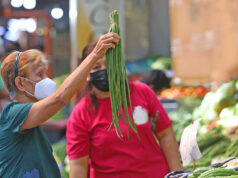Moody’s flags capital outflow pressure
THE PHILIPPINES and other emerging markets are likely to see more outbound capital at a time of rising global yields and an ongoing trade dispute between the United States and China, a credit rater warned on Thursday.
“Overall, emerging market countries remain inherently vulnerable to the risk of capital outflows associated with tightening global liquidity as advanced economy central banks reverse their quantitative easing measures,” Moody’s Investors Service said in a report published yesterday.
“Escalating trade frictions further add to overall uncertainty.”
This comes at a time when the US Federal Reserve has been pursuing rate normalization, having hiked benchmark interest rates seven times since 2015 — including twice so far this year. The Fed is again expected to raise rates by another 25 basis points (bp) next month, amid signs that growth and job creation have been recovering.
This has also triggered similar moves from other monetary authorities as they sought to keep local yields competitive, with investors now sensing the opportunity to take their funds back to the United States as a safe haven.
HOT MONEY INFLOWS SO FAR FOR THE PHILIPPINES
The Bangko Sentral ng Pilipinas (BSP) itself has hiked benchmark rates by a total of 100bps since May, but largely in response to surging inflation.
Foreign portfolio investments saw a $53.29-million net inflow in July as investors anticipated strong second-quarter earnings reports from Philippine corporates, the BSP said. Those inflows represented a turnaround from two months of fund outflows and pulled the seven-month tally to a $455.75-million net inflow, reversing from the $204.24-million net outflow a year ago and better than the $900-million net outflow the BSP has projected by yearend.
The central bank also reported net inflows in the first two weeks of August, which came ahead of an aggressive 50bp rate hike announced on Aug. 9.
“We expect portfolio flows to emerging market countries to remain volatile as monetary policy accommodation in advanced economies is gradually withdrawn,” the credit rater said.
“But other flows, including FDI (foreign direct investments) and bank flows will remain relatively strong overall.”
Moody’s also expects global growth to have “peaked,” even as it should remain solid for advanced economies at 3.3% this year before easing to 3.1% in 2019. The US is still expected to lead global expansion.
Emerging markets forming part of the G-20 are expected to grow by 5.1% this year and the next.
Developing economies’ growth outlook is likely to take a beating from rising US trade protectionism, tightening global liquidity conditions and elevated oil prices.
“Our base case now assumes that the US administration will go forward with some of the proposed additional restrictions on imports from China,” Moody’s said, noting that this factor poses a “disruptive downside risk” to its economic growth forecasts.
Washington and Beijing have lately been engaging each other in tit-for-tat tariff hikes, with total value of affected goods at $100 billion so far — equivalent to a seventh of total annual US-China trade, Reuters reported on Thursday.
Moody’s expects the Philippine economy to grow by 6.8% this year, according to its assessment as of July, when the debt watcher kept the country’s credit rating at “Baa2”— notch above minimum investment grade — with a “stable” outlook.
In its annual credit update, Moody’s said protectionist policies abroad could weigh on external demand, although robust domestic consumption should provide “sufficient buffer” against the impact of weaker merchandise exports.
The debt watcher also expects tighter monetary policy to temper capital outflows and help cushion the impact of “imported” inflation from higher global oil and other commodity prices. — Melissa Luz T. Lopez



